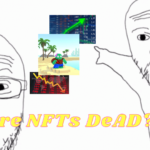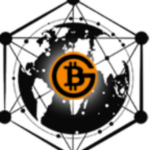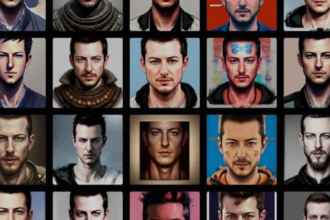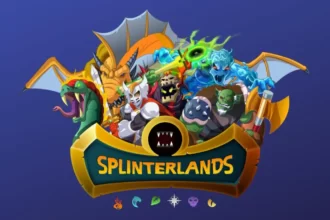The art industry has been one of the first industries to adopt blockchain technology and NFTs. While some critics claim that art can be physical, legendary artist Damien Hirst disagrees boldly.
Britain’s wealthiest living artist, Damien Hirst, has begun an NFT project entitled, “The Currency”. To promote the value of NFTs and the underlying technology, he live-streamed the burning of hundreds of his original artworks for all to bear witness on October 11th, 12:30 pm local time.
From now on, the only authentic representations of 48.51% of these artworks in “The Currency” collection will be in the form of NFTs.
Painting story
5,149 oil paintings will be delivered as physical pieces of art, and 4,851 paintings will exist only in digital form. NFT owners who had paid $2,000 were allowed to trade in their NFT for the physical painting within one year.
By the time the deadline rolled around, the result came in, 48.51% opted for the digital version rather than a physical item. This decision led to their physical painting being burned in front of a camera, for all to see.
With more than half still being a physical collectible, it invites the traditional artwork to learn about NFTs without feeling the pressure or competition to do so. With only 10,000 pieces of art in total, this makes “The Currency” a very exclusive collection.
Modern trend in art
Damien Hirst’s social experiment is a work of art in itself. It showed not only that nearly 50% of high-end art collectors preferred NFTs, but that art is no longer bound to the physical realm thanks to this blockchain innovation.
This goes against traditional thinking that an object must be physical to have value. Hirst is best known for his controversial installations, such as “The Physical Impossibility of Death in the Mind of Someone Living”, which features a shark preserved in formaldehyde. However, the death of his artwork by his own hands has terrified many physical art enthusiasts while NFT aficionados can embrace the move.
NFTs have been on the rise in popularity and value as they provide a way to own and trade digital assets in a decentralized manner. Unlike traditional art, NFTs can be easily resold or traded on secondary markets without the need for a middleman. Hirst’s project is an experiment that could lay the foundations for how artists generate revenue in the digital age.
Some people may speculate that being a witness to their own art being destroyed would be painful, however, for Damien this was not the case. According to a BBC report, Hirst said, “It feels good, better than I anticipated.”

The idea of burning the art pieces
Burning is often thought of as destruction, but Damien Hirst disagrees when it comes to this collection. On the day before the burning event, Hirst explained, “A lot of people think I’m burning millions of dollars of art but I’m not, I’m completing the transformation of these physical artworks into NFTs by burning the physical versions.”
We’ve seen incredible pieces of art torn apart throughout history due to accidents, political reasons, or even for spite, but this proves NFTs use case for the art industry. We may not always be able to preserve the value of art in physical form, but NFTs are immutable thanks to the blockchain.
“The value of art, digital or physical, which is hard to define at the best of times will not be lost, it will be transferred to the NFT as soon as they are burnt”
Damien Hirst
Final thoughts
This project is not only a way for Hirst to make a statement but also a way for early adopters to own a piece of history. Damien Hirst is the first world-renowned artist to experiment with NFTs in such a way and this will likely pave the way for others to follow suit. If you’re interested in this collection, it can still be found on the popular secondary market, OpenSea.















